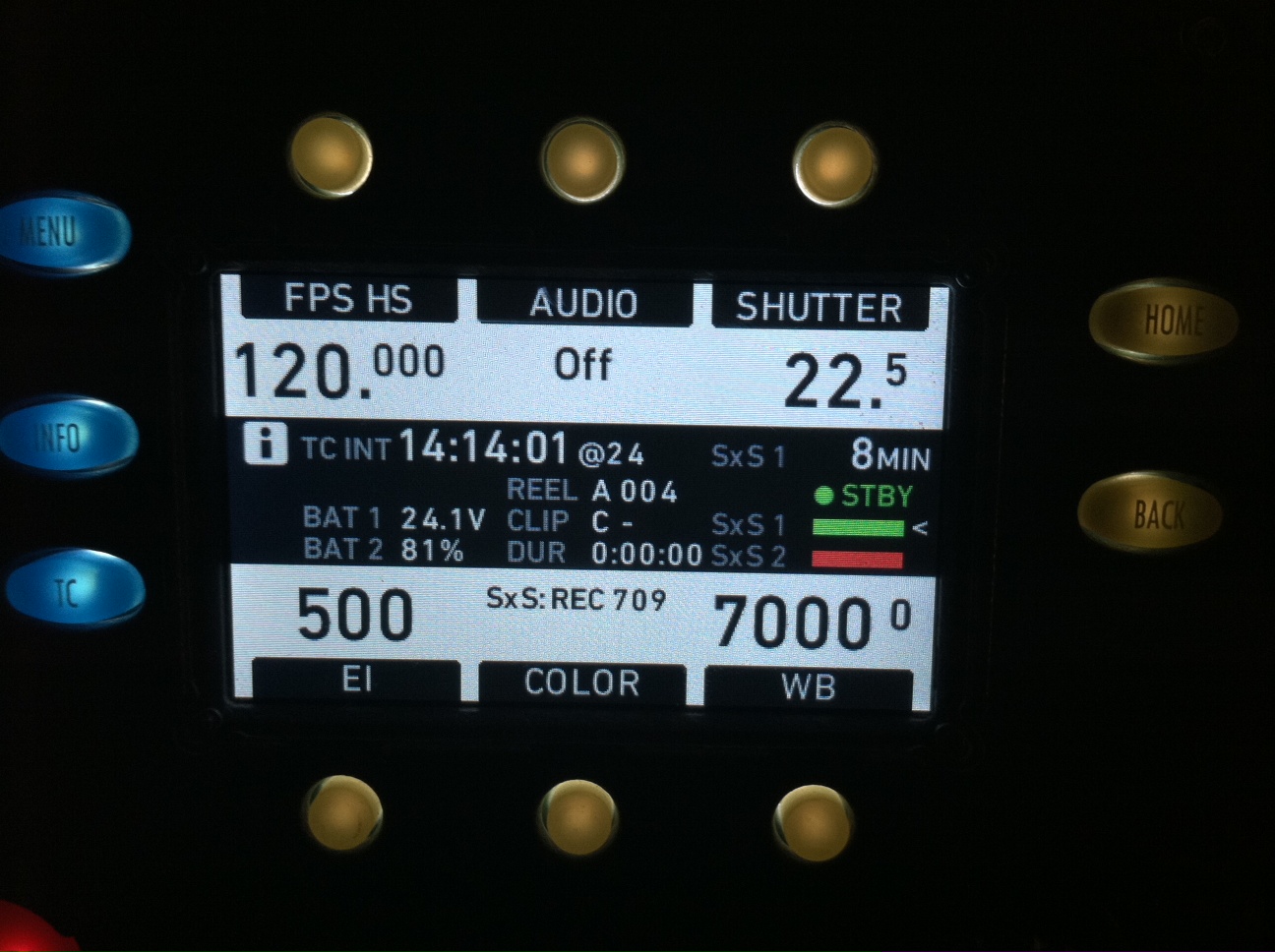Alexa High Speed Upgrade
/Alexa High Speed Upgrade
I had a chance to check out the newest Alexa features last weekend and they're super cool. I also checked out the upcoming Alexa Studio which allows for an optical viewfinder as well as the EVF, true digital anamorphic, and includes the new High Speed 120fps frame rate option. As far as I could tell, the Studio is about the same size as the Alexa Plus. I was expecting it to be quite a bit bigger than the other cameras so this is good news.
It's no Phantom but it's certainly a big improvement.
The Alexa High Speed upgrade is a paid license but I don't recall the price off the top of my head. The new Sony 64GB SxS Pro cards are requisite to doing both 120fps shots at ProRes 422HQ and 60fps shots at ProRes 4444. Note the cheaper SBS version of SxS card with the orange plastic band doesn't have sufficient write speeds for use with the Alexa.
The high speed option has to be turned on via the "Recording" menu in the camera and it takes about 40 seconds to load.
up to 120fps @ProRes HQ to SxS cards
Note that when the High Speed option is turned on, you get a "HS" next to your frame rate on the home screen. While in HS mode, you cannot turn on the 4444 codec.
up to 60 fps @ ProRes 4444 to SxS cards as well
For the work I do - commercials and episodic - it seems like it's going to be Alexa for some time to come. Now with the Studio option, 120fps, and more cost effective ways of recording Arri Raw, it's even more versatile and well suited for the rigors of production. ProRes 4444 to SxS cards has proven to be a great format for broadcast destined projects. It's definitely not the most robust or high quality image you can get out of the Alexa but as has been proven time again, good enough for TV. Not only that but if anyone saw Nicolas Winding Refn's film Drive, this was shot dual link 1080p 444 to HDCamSR at Standard Quality 440mbps. I've seen it projected digitally several times and I think it's some of the best digital cinema I've seen yet. Incredible resolution, dynamic range, and virtually noiseless images. It's stunning work and a kick ass movie to boot. The soundtrack is amazing as well.











 © 2021 Bennett Cain / All Rights Reserved /
© 2021 Bennett Cain / All Rights Reserved /